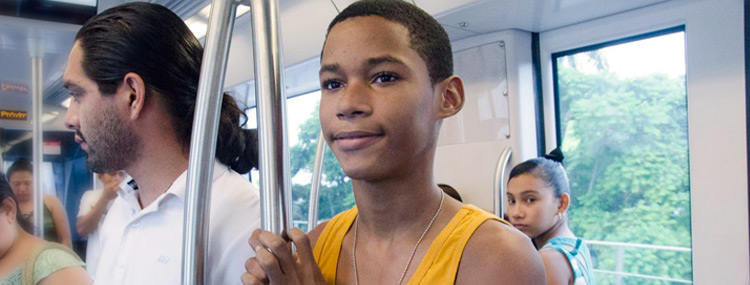The Panama Metro transports 30 thousand people per hour
More than 400 thousand users mobilized during the first days of operation, reducing the travel times between their homes, and working and studying places
Two months ago, people accessed the Panama Metro for the first time with curiosity regarding the unknown where, an ample space, escalators, illumination, ventilation, and security, welcomed them.
Javier Parada, a 16 year old student, stated that "before there was too much traffic, and I was never on time to schools. Now the distance has shortened and I arrive earlier", as he highlights the benefits of the new transportation system.
As Javier, more than 400 thousand users mobilized during the first days of operation and reduced the travelling times between their homes, and working and studying places. Eric Duarte, a 29 year old salesman who uses the system at the Iglesia del Carmen station, commented that "with the Metro, everything is faster. Before, it took me one hour and 45 minutes and now it takes me 10 to 12 minutes".
The change has been notorious, not only for the more frequent users. Madelein Vissuette, who occasionally takes the Metro when leaving the Faculty of Medicine, says "It is fantastic. I see that people get to their homes earlier and have more time to share with their families".
In these two months, in addition to the contribution to Panamanians daily routine, the Metro has become a weekend stroll. Getting to know it, travel in its cars, and live the experience of going in a few minutes from one end of the city to the other is a recreational activity for many families.
Connecting the city
With the capacity to transport up to 30 thousand people per hour, the Panama Metro joins the public transportation service to improve the mobility of the more than 1.4 million inhabitants in the city, and becomes a part of the Mi Bus urban transportation system, which started operations in 2010 and has a fleet of 1,236 buses.
It takes only 23 minutes to go from Los Andes to Albrook, two opposing sectors in the city. The speed is not the only contribution, as the vehicular park on Panama went form 314, 229 cars in 2001 to 998,500 in 2013. This reality forced inhabitants to leave their homes two or three hours early in order to get to their destinations on time.
The advantages of the new transportation system, such as comfort, punctuality in the routes, greater range of schedules, passenger information systems, and specific areas for people with reduced mobility, are strengthened by the educational campaigns initiated by the Secretariat of the Panama Metro which seek to contribute to the construction of culture regarding the good use of the service and the sense of belonging of the inhabitants.
With the construction and entry into operations of the Panama Metro, CAF, Development Bank of Latin America, contributes with the development of infrastructure in the region, the improvement of public transportation, and the quality of life of Panamanians as a main source of multilateral financing, contributing USD 600 million of a total of USD 1.88 billion.
Starting on June 15th, Panamanians will pay USD 0.35 per trip. Two months after its inauguration, the Panama Metro has a positive evaluation. The improvements in mobility and the reduction in traveling times which translates into more time to share with the family in addition to the quality of the service, are some of the benefits that stand out among those surveyed.
CAF's more recent content

CAF, ECLAC, IDB and PAHO Promote Sustainable Development in the G20
The Regional Organizations of the Americas congratulate Brazil on its successful G20 Presidency, highlighting its leadership on key issues such as poverty, governance, and climate change. They also reaffirm their commitment to actions that promote equity and development in the region.
Urgent Call for Action to Safeguard Caribbean SIDS at CAF Symposium
As the global community grapples with the escalating climate crisis, Caribbean Small Island Developing States (SIDS) are running out of time to secure critical investments and support needed to strengthen their economies and protect vulnerable communities from the intensifying impacts of climate change. With the window to take decisive action rapidly shrinking, CAF - Development Bank of Latin America and the Caribbean, in partnership with the Commonwealth Secretariat and the Antigua and Barbuda High Commission, brought together key stakeholders for a symposium in London to address the critical vulnerabilities Caribbean SIDS face.












